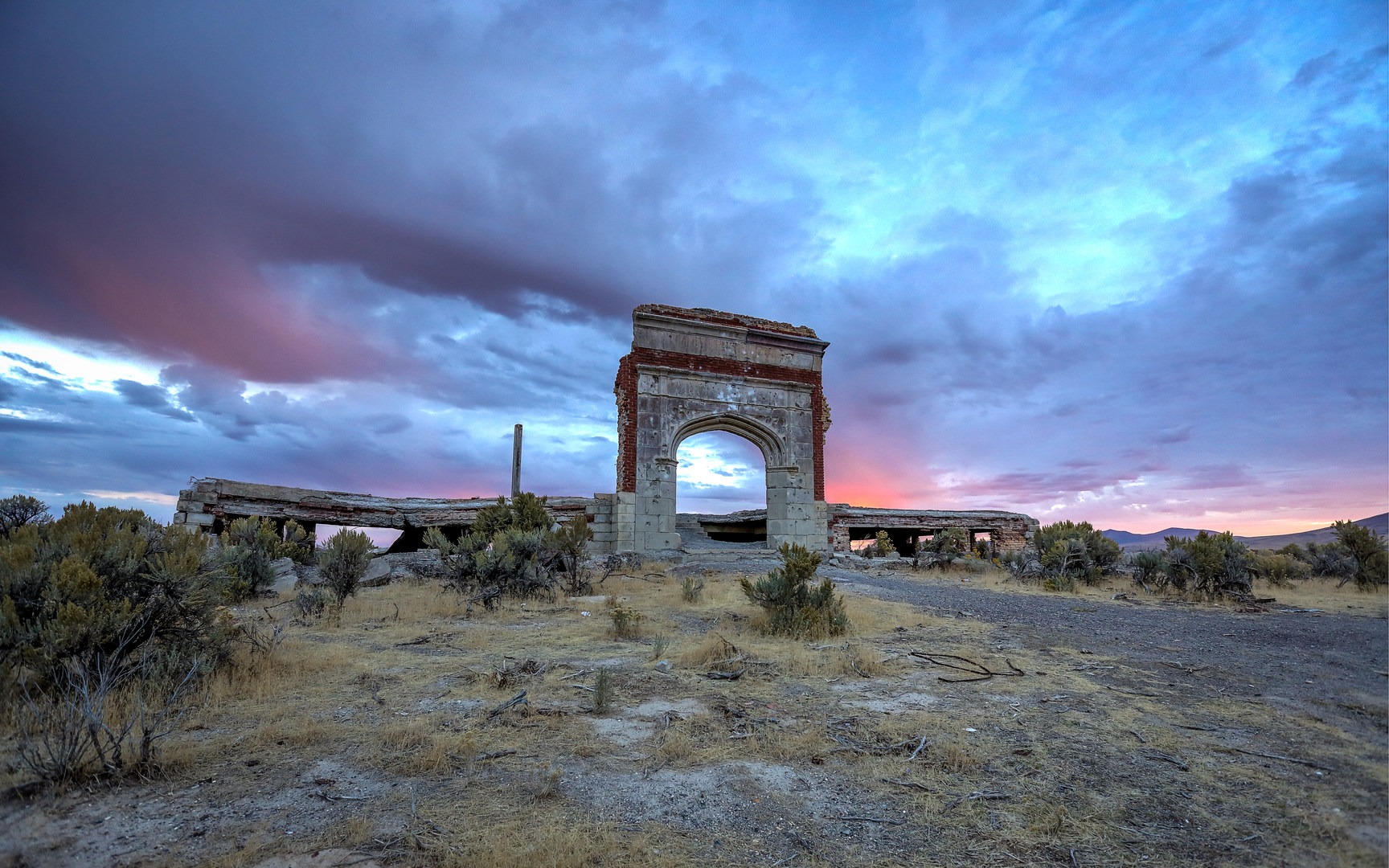You are here
The town of Metropolis emerged when a group of Massachusetts and Salt Lake City investors, led by Harry Pierce and his Pacific Reclamation Company (PRC), envisioned a modern town central to a farming homestead district. In 1910, Pierce and the PRC bought 40,000 acres of land and set about constructing this new city.
Named Metropolis, the investors outfitted the town with a post office, a train depot, a school, a multi-purpose amusement hall, and a modern hotel. The hotel boasted that it was the finest between Reno and Salt Lake City; it had its own electric generator, and each room had hot and cold running water.
The company constructed a dam on nearby Bishop Creek and built an intricate series of ditches and canals to the land surrounding Metropolis for irrigation. In 1912, the Southern Pacific Railroad would build a spur to the town, and the growing population, largely Mormons from the Salt Lake Valley, swelled to about 700.
Downtown Metropolis featured a four-block area of cement sidewalks and light poles, and Mormon services were held in the amusement hall each Sunday.
Metropolis met its decline when the town of Lovelock, 200 miles downriver of Bishop Creek and the Humboldt River, sued the Pacific Reclamation Company for infringing on its water rights. Pierce's company had never secured water rights from Bishop Creek.
Pierce lost the court battle. Residents of Metropolis attempted dry farming, but most were forced to give up when drought conditions hit the region along with an infestation of crickets. A typhoid epidemic hit Metropolis around this time, and the Pacific Reclamation Company declared bankruptcy in 1920. Two years later, the railroad would discontinue service to the town, forcing commerce and passengers to travel to the town of Wells, located about 15 miles away down rough dirt roads.
The hotel caught fire in 1936, the post office closed six years later, and in 1947, the Lincoln School taught its last class. The few remaining residents would take up ranching, a practice which continues scattered across the area today.
Metropolis' relatively late abandonment and grandiose visions make the concrete and brick foundations remaining today different than most of the neighboring wooden shacks and rugged metal buildings.
A level and 1-mile out-and-back trail traces a path around the most significant remains of the town. Among the more interesting remnants are the a historical plaque with visitor guest book, a cemetery where former town residents are still buried, the brick entrance arch of the Lincoln School, and the foundation of the Hotel Metropolis.
It remains possible to enter the school building or to walk up the stairs to the floor of what was the upper story and see the usually-dramatic skies and wide views that stretch over the region. There are gaps and holes, however, not to mention collapsed wings of the building, so be very cautious here.
It is also possible to explore the area more and find the remains of homes and cars belonging to past residents.
The Bishop Creek dam, built largely of brick from the 1906 San Francisco earthquake, still remains accessible to high-clearance four-wheel drive vehicles or those willing to walk slightly upriver from 12-mile Hot Spring. Very little water is held behind it, and the canals that once approached Metropolis have all but disappeared. Today Metropolis makes an interesting detour for those passing through the area, and it can be combined with nearby hot springs for a great day trip.
The nearest amenities of any kind are located in Wells. Plan accordingly.
Logistics + Planning
Current Weather: Powered by Dark Sky
























Comments
Sign In and share them.